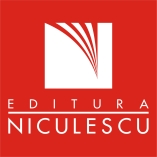Editura NICULESCU utilizează fişiere de tip cookie pentru a personaliza și îmbunătăți experiența dumneavoastră pe site-ul nostru. Înainte de a continua navigarea pe acest site, vă rugăm să alocaţi timpul necesar pentru a citi și înțelege conținutul paginilor: Politica de utilizare Cookie-uri și Prelucrarea datelor cu caracter personal, actualizate conform Regulamentului european de protecţia datelor cu caracter personal (GDPR). Prin continuarea navigării pe website-ul nostru confirmaţi acceptarea utilizării fişierelor de tip cookie conform celor specificate în Politica de utilizare Cookie-uri. Nu uitaţi, totuși, că puteţi modifica în orice moment setările acestor fişiere cookie urmând instrucțiunile din Politica de utilizare Cookie-uri.
FAIMA Business & Management Journal – volume 7, issue 4, December 2010
FAIMA Vol 7 - Issue 4 [Decembrie 2019]
CONTENT
Agility of the Supply Chain 3
Gheorghe Militaru
Modeling of the Intermodal Terminal 5
Sergiu Olteanu, Mihaela Popa, Ştefan Burciu, Florin Rusca
Using the Technology Acceptance Model
to Adopt Intelligent Banking 13
Mihaela-Rodica Ganciu, Andrei Niculescu
Distribution Capacity in the Supply Chain Management 24
Evgeniya Tonkova
Logistic Performance in Supply Chain Management 33
Bianca Guliman, Sorin Ionescu
Skills for Virtual Communication 44
Elena Oliviana Epurescu
The Emotional Relationship Beween Company and Client 54
Mariana-Simona Gheorghe
The Main IoT Application 67
Ramona Neghină, Valentin Mănescu, Gheorghe Militaru
EDITORIAL
Agility of the Supply Chain
It's been almost 40 years since Keith Oliver of Booz-Allen-Hamilton first introduced and then developed the Supply Chain Management concept. Although the term appears even in an article from 1898. The supply chain represents a lot of companies linked to each other and which outline the flow of resources transformation into products and services. K. Oliver defined SCM as the process of planning, implementing and controlling operations in the supply chain. Supply chain management aims to increase the value of the product offered. A solution to this effect has been offered since 1985 by Michael Porter who defined the value chain and value system, needed to create a competitive advantage. Over time, other solutions have been identified to create the efficiency of the supply chain, many of them used today. One trend was, for example, the globalization of the supply chain. But lately some new trends are emerging.
Companies have multiple options for getting products to buyers. They can use indirect channels, or they can sell directly to customers via the Internet or a sales force. Since profit margins vary depending on which channels are used, the firm must decide on the optimal channel mix. Companies compete based on innovation, customer experience, quality, and cost. Time to market is critical because the window of opportunity can be small.
Supply chain performance is measured with efficiency-related metrics such as asset utilization, inventory days of supply, products costs, and total supply chain management costs. In this sense, the management of the company must know the firm’s value system as well as suppliers, customers, and suppliers ‘suppliers.
Today’s supply chain is broad and continually evolving, which means that it must be agile to be effective. Consumers have multiple choices in how they purchase products and they expect high levels of customization. Also, supply chain sourcing has become very fluid. The ability to rapidly reconfigure your supply chain is essential to successful businesses. An agile supply chain can deliver on those expectations.
Machine learning is especially useful for large, dynamic data and it is applied in logistics technologies to enhance warehouse management systems, supply chain visibility or supply chain planning. Advanced analytics provides the ability to extrapolate the current environment to make profitable decisions. Robots, drones or autonomous vehicles enable new business processes to reduce the time for inventory checks.
Supply chain risk is everywhere, and it is tough to prioritize. Consequently, companies need to start evaluating and confronting cyber risk at every level. A buyer may discover financial issues when increasingly late deliveries, inefficient alignment of supply and demand causing unnecessary inventory and production, capacity constraints and inadequate sources of funding.
An integrated supply chain is a process wherein every phase is streamlined and inseparable. A non-integrated supply chain is disconnected and functions in silos. Integrated supply chain allows a company to focus on assets that would allow reducing waste and costs. Increasing efficiency can save money through reduced warehouse space and lean supply chain for more profitable operations. The ability to be flexible and adapt to different situations is important in any competitive industry.
Many of the changes made in SCM have arisen from new theories applied in management, such as Resource-Based View (RBV), Agency Theory (AT), Just in Time (JiT), Theory of Constraints (ToC), Time Based Competition (TBC), etc. And innovation in management is a continuous process.
Gheorghe Militaru
Deputy Chief Editor
| Autor(i) | Colectiv Politehnica |
|---|---|
| Număr pagini | 80 |
| Anul apariţiei | 2019 |
| ISBN | 2344-4088 |
| Format carte | 20 x 26 cm |
| Cod produs | FAIMA - 25 |

